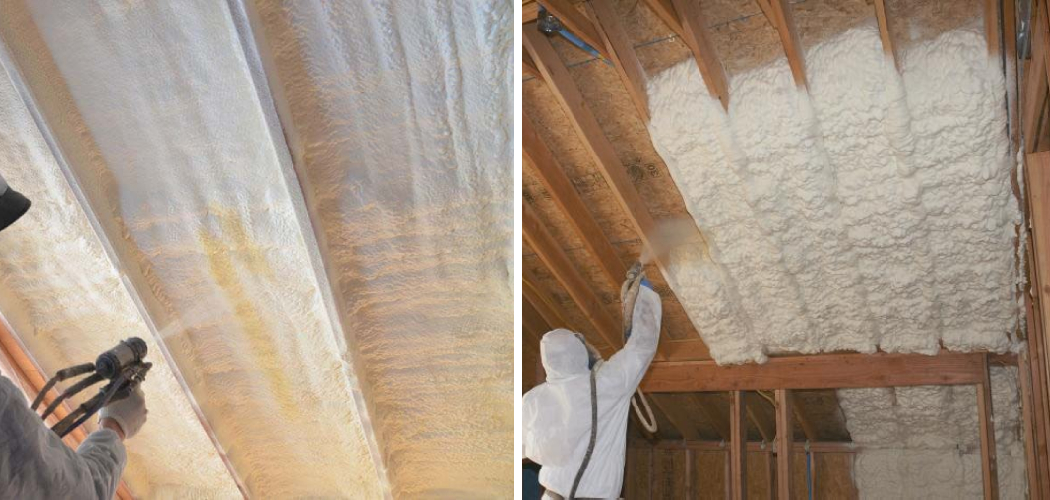Foam ceiling spraying offers many benefits, from reducing noise to creating a comfortable living environment. It is especially important for homes in noisy areas or those subject to extreme temperatures.
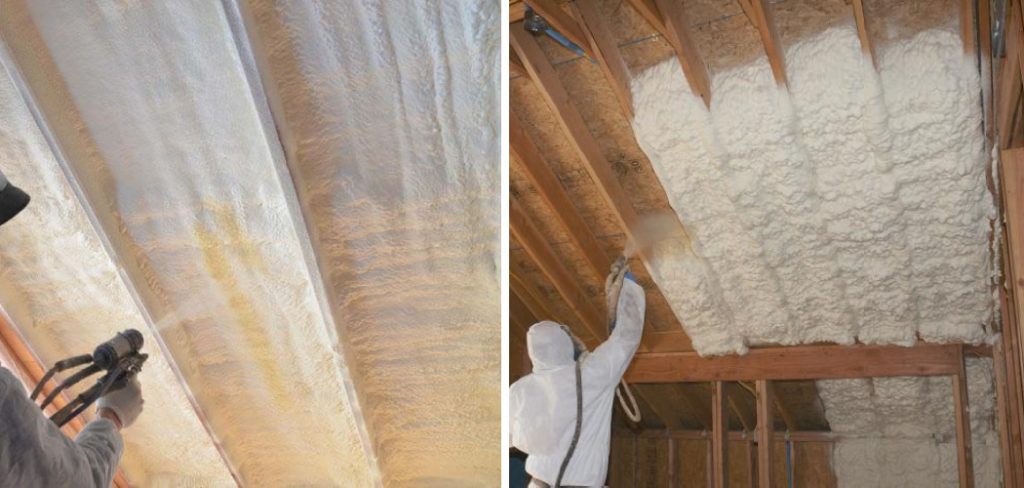
Spray foam insulation is an environmentally-friendly and energy-efficient option for sealing off your home from the outside elements. This type of insulation helps reduce heat transfer into and out of the home, which can lead to significant energy savings over time.
Spray foam ceiling offers several advantages compared to other insulation options. The most significant advantage is that it provides superior insulation, creating an airtight seal around the space it is used in.
This prevents warm and cool air from leaking out, resulting in lower energy bills by reducing the work your HVAC system must do to maintain a comfortable temperature. In this blog post, You will learn how to spray foam ceiling in detail.
Tools You Will Need
- Safety goggles and facemask
- Coveralls or other protective clothing
- Foam spray applicator gun
- Compressor
- Extension hose
- Pressure regulator and gauge
- Pressure relief valve
- Spray foam tanks
- Caution tape (to cordon off the area)
- Plastic sheeting
- Painter’s tape
- Putty knife or scrapers
- Plastic tarps (for overspray)
To ensure the best quality results when spraying foam on your ceiling, it is important to have the right tools.
Step-by-Step Processes for How to Spray Foam Ceiling
Step 1: Inspect the Ceiling
Before you begin, it is important to inspect the ceiling for any signs of damage or rot. Ensure all holes and cracks are sealed and repaired so they will not interfere with your spray foam application.
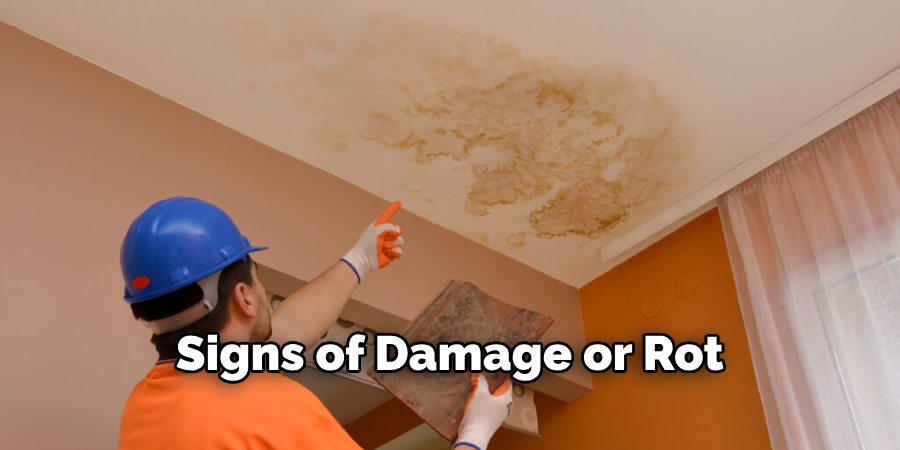
Step 2: Get the Right Supplies
Make sure that you have all the necessary supplies before starting your project. Spraying foam requires an air compressor, spray gun, and hopper, and the foam itself. Before spraying any material, wearing protective gear like eye protection and a face mask or respirator is important. This will help protect you from any foam splashing while you work.
Step 3: Connect the Air Compressor to the Gun
Connect the air compressor hose to the spray gun and ensure it is properly connected before turning on your machine. It is also important to check that all connections are secure and leak-free. To prime your spray gun, you must fill the cup with foam and then release a few short bursts of air from the gun. This will help ensure an even foam flow when you start spraying.
Step 4: Adjust Your Settings
Set your spray gun settings according to what type of material you are using, and also adjust the pressure accordingly. It is important to get the right settings to achieve the desired results. Before beginning your project, it is a good idea to test your settings on a piece of scrap material or cardboard. This will help you to make any necessary adjustments before starting your spray foam application.
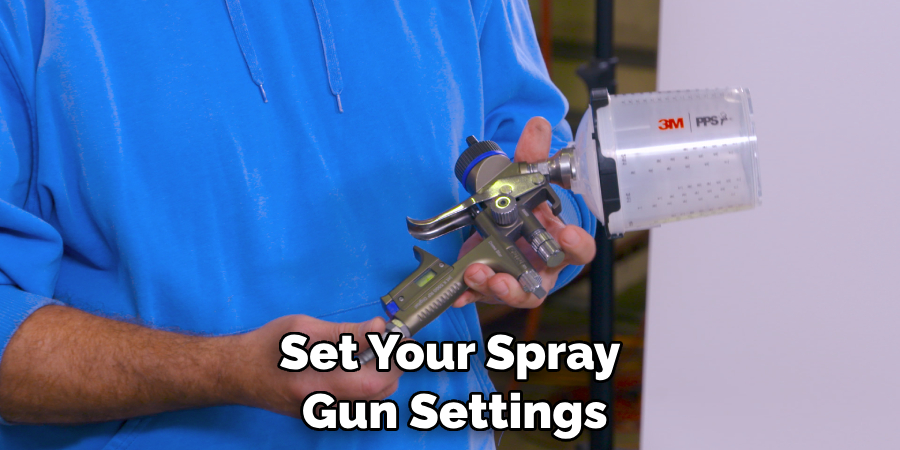
Step 5: Begin Spraying
Once you are satisfied with your settings, it is time to start spraying. Make sure you keep the gun at least 6-8 inches from the surface and move slowly and steadily as you spray. After spraying, check the entire area for even coverage and make any necessary adjustments.
Step 6: Clean Up
Once your project is finished, make sure to clean up all of the supplies and equipment that you used. This will help extend your tools’ life and ensure a successful spray foam job every time.
Spraying foam ceilings is a great way to increase insulation and create a better-looking finished product. With a few simple steps, you can ensure that your project is done correctly the first time.
Tips for How to Spray Foam Ceiling
- Ensure that the spray foam material is suitable for the area where it will be applied. Check with your local building department or manufacturer for the right product.
- Wear protective gear such as long-sleeved clothing, safety goggles, and a respirator mask when spraying foam insulation on the ceiling.
- Consider covering furniture and other objects with plastic sheeting or drop cloths to protect them from overspray.
- Ventilate the area well when you are spraying foam insulation on the ceiling. Open windows, use fans and place an exhaust fan in a doorway if possible to clear out any vapor or fumes.
- Make sure to use the right tools for the job, such as a long-handled applicator gun and a ladder or scaffolding if necessary.
- Be aware of any fire hazards that can arise from using spray foam insulation on the ceiling, such as exposed wiring or combustible materials. In these cases, it is best to consult with a professional.
- When finished spraying, check the ceiling carefully for any missed spots or drips and take care of them promptly. Allow the foam insulation to cure fully before covering it with drywall or other finishes.
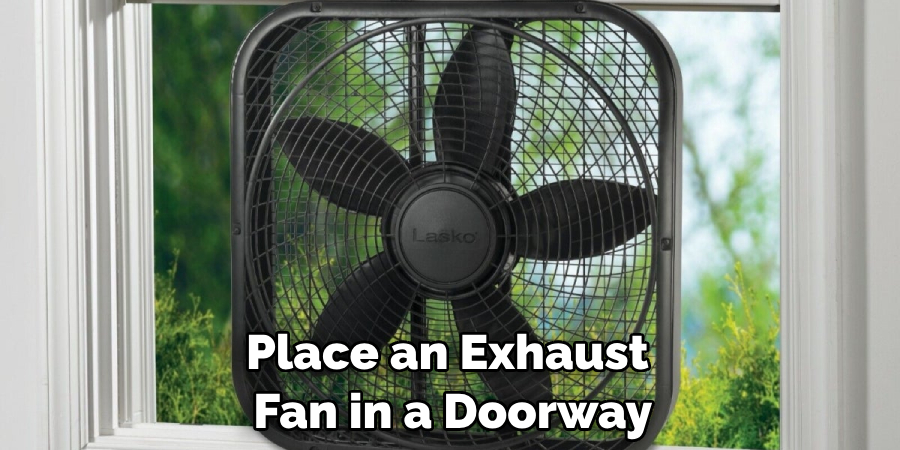
Following these safety tips will ensure that your spray foam ceiling installation project is completed safely and efficiently. Doing it right pays off in the long run with durable, energy-efficient potential savings from your insulation.
How Long Will It Take for the Foam to Dry and Be Ready for Use?
Once you have sprayed your foam ceiling, it can take 24 hours to several days for the foam to dry completely and be ready for use. It is important to allow sufficient time for the foam to harden and cure before using it or walking on it. The drying time can vary depending on the temperature and humidity of the room.
If the room is warm and dry, the foam may take as little as 24 hours to set completely. If your environment is cooler and more humid, it could take up to a few days or even longer for the foam to be ready. You should wait at least 24 hours before attempting to put anything on top of the foam or walking on it. This will help ensure your foam ceiling is properly cured and ready for use.
How Can You Clean Up Any Mess After Spraying Foam on the Ceiling?
- Use a damp cloth to wipe down the walls and ceiling around the area where you have sprayed foam. This will help remove any excess foam that has leaked out during application.
- Vacuum up any remaining foam particles using an appropriate vacuum cleaner with a hose attachment.
- If there are any stubborn patches of foam, use a razor blade to scrape them off the wall or ceiling gently.
- If necessary, use a mild detergent and water solution to clean any lingering foam residue from the area.
- Make sure to dry the area thoroughly before applying any coating on top of it, such as paint or wallpaper.
- Repeat the above steps until all foam residue has been removed from the surrounding area.
- Dispose of any excess foam appropriately, such as a hazardous waste container. Do not pour it down the drain or flush it into a septic system.
- Once you have finished removing the foam, you can begin painting or wallpapering the ceiling.
- To ensure proper adhesion of the chosen material, make sure to prime the walls and ceiling beforehand using an appropriate primer. This will help protect your paint or wallpaper from any residual foam particles on the surface.
- Enjoy your newly-sprayed foam ceiling! It should look great and provide you with improved thermal insulation.
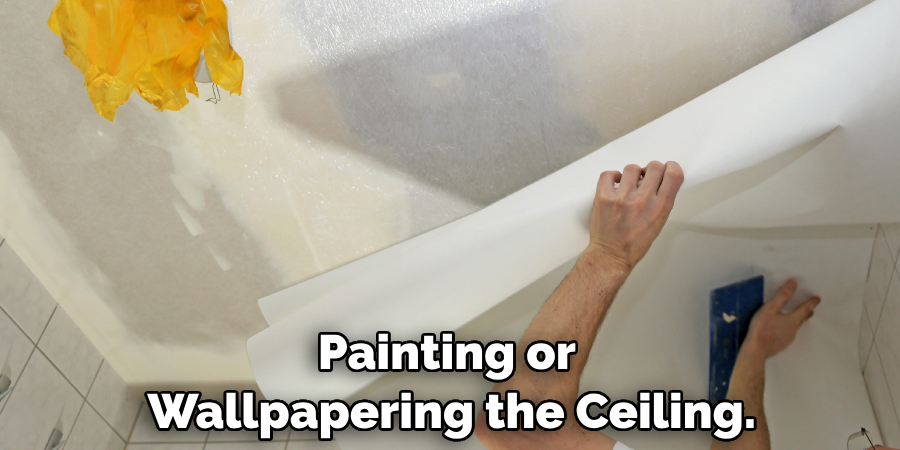
Spraying foam on the ceiling can be a great way to insulate your home and save money on energy costs. However, taking the necessary steps to ensure that any mess created during the application is properly cleaned up afterward is important. By following the steps above, you can make sure to avoid any potential issues and enjoy the benefits of foam insulation in your home.
How Often Should You Check the Condition of Your Sprayed Foam Insulation?
Your ceiling insulation is an important part of your home’s energy efficiency measures. It helps with temperature regulation and can help keep you warm in the winter and cool in the summer. To ensure that your sprayed foam insulation remains effective, it’s important to inspect it regularly for any signs of deterioration or damage.
It is recommended that you inspect the condition of your sprayed foam insulation at least twice per year. During your inspection, look for any signs of deterioration or damage, such as cracks, air gaps, or peeling.
If you notice anything that looks out of the ordinary, it’s best to contact a professional to assess the situation and determine if any repair is necessary. Another important factor to consider is the age of your insulation, as older insulation can be more vulnerable to damage and inefficiency.
If your sprayed foam ceiling was installed several years ago, you might want to contact a professional for an inspection more frequently than twice per year.
Are There Any Health Risks Associated With Breathing in Foam Insulation?
When it comes to spray foam insulation, some potential health risks should be taken into consideration. Spray foam can release Volatile Organic Compounds (VOCs) as it is applied and may cause eye irritation, breathing difficulties, or even skin reactions in individuals with pre-existing sensitivities to such chemicals.
It’s also worth noting that individuals who are exposed to large amounts of spray foam insulation may be at an elevated risk of developing asthma or other respiratory conditions.

It’s important to note, however, that modern foam insulation products come with significantly reduced levels of VOCs and can even be installed without using a respirator in some cases.
As a result, most professional insulation contractors and homeowners alike can safely spray foam without compromising their health. When spraying foam insulation indoors, it’s also important to ensure that the area has adequate ventilation so that any VOCs released can quickly exit the space.
Conclusion
In conclusion, spraying foam ceilings is a great way to insulate your home effectively. It provides superior insulation, soundproofing, and fire-resistance capabilities. Additionally, it requires minimal preparation and can be done quickly and easily. However, it is important to take safety precautions when working with any type of spray foam or other chemicals.
Be sure to wear the appropriate protective gear, follow the manufacturer’s instructions carefully and take any necessary steps to ensure proper ventilation. I hope this article has been beneficial for learning how to spray foam ceiling. Make Sure the precautionary measures are followed chronologically.
